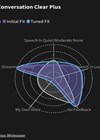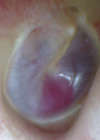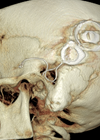How I Do It
HearAdvisor’s scientific and consumer-friendly approach to evaluating hearing aids
An ageing population means more hearing aid users. The authors of this article describe their techniques for independently assessing prescription and over-the-counter hearing aids in an acoustic laboratory. As the role of consumers in the hearing aid purchasing decision continues...
Mindfulness meditation: how personal experience of managing severe pain contributes to understanding tinnitus management
In this interesting article the author describes the potential benefit of mindfulness in the management of tinnitus, using a case report to illustrate this.This may well be an additional direction we can suggest for our patients. Mindfulness is a word...
A practical approach to tinnitus
Tinnitus is the perception of sound without an external source. The estimated prevalence in adults is between 10-15% [1]. In patients with significant tinnitus, prompting them to seek medical attention, 50% will have improved to mild or no tinnitus by...
How to safely image patients with cochlear implants
Cochlear implants have quickly become a widely used aid for hearing-impaired people. As these implants include metal elements, the choice of an appropriate imaging modality for patients carrying such devices should receive special attention. This is important due to image...









